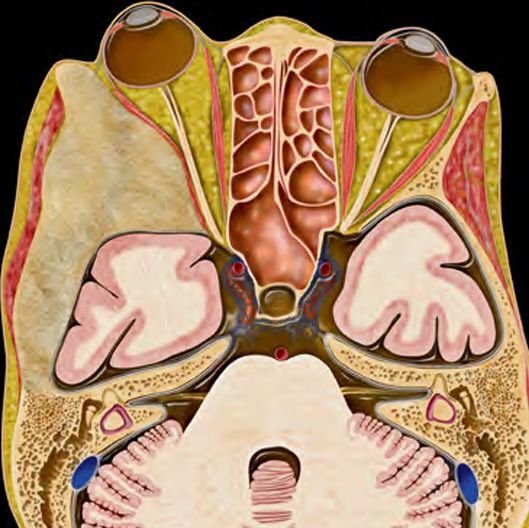Ewing Sarcoma
Ewing Sarcoma
Ewing Sarcoma is a rare and aggressive type of bone or soft tissue cancer that primarily affects children and adolescents. It most commonly arises in the long bones, pelvis, spine, and skull. When it occurs in the cranial bones or spine, it poses a significant risk due to proximity to the brain, spinal cord, and vital structures, making timely diagnosis and expert surgical management critical. In Bangladesh, many pediatric cases are either diagnosed late or initially misinterpreted as infections or benign bone lesions. Dr. Md. Nafaur Rahman, one of Bangladesh’s leading pediatric neurosurgeons, offers specialized diagnostic and neurosurgical intervention for cranial and spinal Ewing sarcomas in children at both NINS and Bangladesh Paediatric Neurocare Centre. What is Ewing Sarcoma? Ewing Sarcoma is part of a family of tumors known as Ewing Family of Tumors (EFT), characterized by small round blue cells and a specific genetic translocation (most commonly t(11;22)(q24;q12)). It typically affects: Children and adolescents aged 5–20 years Boys slightly more than girls Sites include long bones (femur, tibia), pelvis, ribs, vertebrae, and skull Causes and Risk Factors Exact cause unknown No strong inherited or environmental links Chromosomal translocation involving EWSR1 gene is the hallmark genetic mutation Occurs sporadically and is not typically inherited Symptoms in Pediatric Patients Symptoms depend on the tumor location. When Ewing Sarcoma involves the skull or spine, signs may include: Skull Ewing Sarcoma: Swelling or lump on the scalp, often painful Local tenderness or redness Headache, nausea, or vomiting Neurological deficits if compressing the brain Bony erosion visible on CT or X-ray Spinal Ewing Sarcoma: Back pain, stiffness, or swelling Neurological weakness or paralysis if spinal cord is compressed Bladder or bowel dysfunction in advanced cases In long bones: Pain and swelling over the affected bone Limping or difficulty using the limb Fever, fatigue, or weight loss in systemic cases Importance of Early Diagnosis in Bangladesh In Bangladesh, scalp swellings or spinal pain in children are often misdiagnosed as abscesses or tuberculosis. Many children receive prolonged antibiotic therapy without improvement, leading to delayed referral. Early diagnosis is critical to improve survival and reduce neurological complications. Diagnostic Approach by Dr. Nafaur Rahman 1. Clinical Evaluation Thorough neurological and orthopedic assessment Detailed family and symptom history 2. Imaging Studies X-ray: Shows bone destruction and soft tissue swelling CT scan: Reveals extent of bone involvement MRI: Crucial for assessing soft tissue spread and neurovascular compression PET scan or bone scan: For metastatic screening 3. Biopsy & Histopathology Core needle or open biopsy for diagnosis Immunohistochemistry and cytogenetics to confirm Ewing Sarcoma (CD99 positivity, EWSR1-FLI1 translocation) Treatment Strategy Ewing Sarcoma requires a multimodal treatment plan, including surgery, chemotherapy, and sometimes radiotherapy. Dr. Nafaur Rahman leads a team that provides comprehensive, individualized care. A. Surgical Management Indications: Tumor in skull, spine, or areas causing compression Need for biopsy or tumor excision Spinal decompression to preserve neurological function Approach: Safe and complete tumor resection using advanced neurosurgical techniques Cranioplasty for reconstruction if skull bone is removed Spinal stabilization if vertebrae are involved Close coordination with oncology for timing around chemotherapy B. Chemotherapy Essential component of treatment Administered before and after surgery Common drugs include vincristine, doxorubicin, cyclophosphamide, ifosfamide, and etoposide C. Radiotherapy Considered if surgical removal is incomplete Also used in inoperable or metastatic cases Prognosis 70–80% survival rate in localized disease with multimodal treatment Reduced prognosis if metastasis is present at diagnosis Neurological outcomes depend on early surgical decompression Lifelong monitoring is required to detect recurrence Challenges in Bangladesh Delayed diagnosis due to lack of awareness Misinterpretation as bone infections or tuberculosis Inadequate pediatric oncology infrastructure in rural areas Financial and logistical burden of prolonged treatment Stigma around cancer affecting timely intervention Why Choose Dr. Md. Nafaur Rahman? Extensive experience in neurosurgical management of pediatric bone tumors Expert in minimally invasive and craniofacial surgical techniques Works within a multidisciplinary team including pediatric oncologists and radiologists Personalized care with emphasis on functional and cosmetic outcomes Facilities available at both government and private settings for broader access Contact for Appointment Dr. Md. Nafaur Rahman Assistant Professor, Pediatric Neurosurgery National Institute of Neurosciences & Hospital (NINS) Chief Consultant, Bangladesh Paediatric Neurocare Centre 📞 For Serial/Appointment: 01912988182 | 01607033535 🌐 Website: www.neurosurgeonnafaur.com










